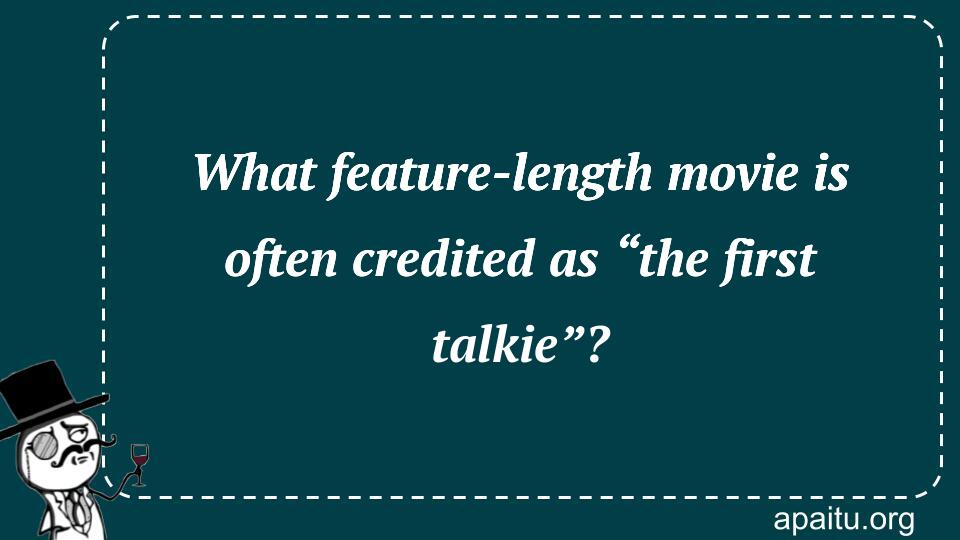Question
Here is the question : WHAT FEATURE-LENGTH MOVIE IS OFTEN CREDITED AS “THE FIRST TALKIE”?
Option
Here is the option for the question :
- Singin’ in the Rain
- Metropolis
- The Cabinet of Dr. Caligari
- The Jazz Singer
The Answer:
And, the answer for the the question is :
Explanation:
In the first “talkie,” “The Jazz Singer” from 1927, Al Jolson said, “You ain’t heard nothin’ yet” before breaking into song. ‘The Jazz Singer’ was the first feature-length film to feature spoken dialogue, forever altering the film industry. The previous year, Warner Brothers’ ‘Don Juan’ used the Vitaphone method to show a film with sound, and a similar system was used to show speeches with recorded words.

The Jazz Singer, released in 1927, is often credited as the first feature-length movie with synchronized dialogue, earning it the title of “the first talkie.” The film’s groundbreaking use of sound revolutionized the film industry and marked a major turning point in the history of cinema.
The Jazz Singer tells the story of a young Jewish man, played by Al Jolson, who dreams of becoming a popular singer despite the disapproval of his father, a cantor in a synagogue. The film features several musical numbers, including Jolson’s signature song, “Mammy.”
The film’s use of synchronized sound was a major technical achievement, allowing for dialogue and music to be heard alongside the action on screen. Prior to The Jazz Singer, films were typically silent, with music and sound effects provided by live orchestras or added in post-production.
The success of The Jazz Singer paved the way for the widespread adoption of sound in movies, leading to the decline of the silent film era and the rise of the “talkies.” The film industry underwent a rapid transformation in the years following The Jazz Singer’s release, with studios investing in new technologies and techniques to improve the quality of sound in films.
The Jazz Singer’s impact on the film industry was not limited to technological advancements. The film also reflected the cultural and social changes taking place in America at the time, exploring themes of assimilation, identity, and generational conflict.
The Jazz Singer has also been criticized for itsdepiction of racial stereotypes and cultural appropriation. Jolson, a white performer, performed in blackface in several scenes, perpetuating negative stereotypes of African-Americans. The film’s portrayal of Jewish characters has also been criticized for reinforcing negative stereotypes.
The Jazz Singer’s impact on the film industry and popular culture cannot be overstated. The film’s use of synchronized sound paved the way for new forms of storytelling and expression in cinema, and it helped to establish Hollywood as a major cultural force in America and around the world.
The Jazz Singer is recognized as a classic of American cinema and a landmark achievement in the history of film. Its groundbreaking use of sound and its exploration of complex themes and characters continue to inspire and influence filmmakers and audiences around the world, demonstrating the enduring power of great storytelling and the magic of cinema.